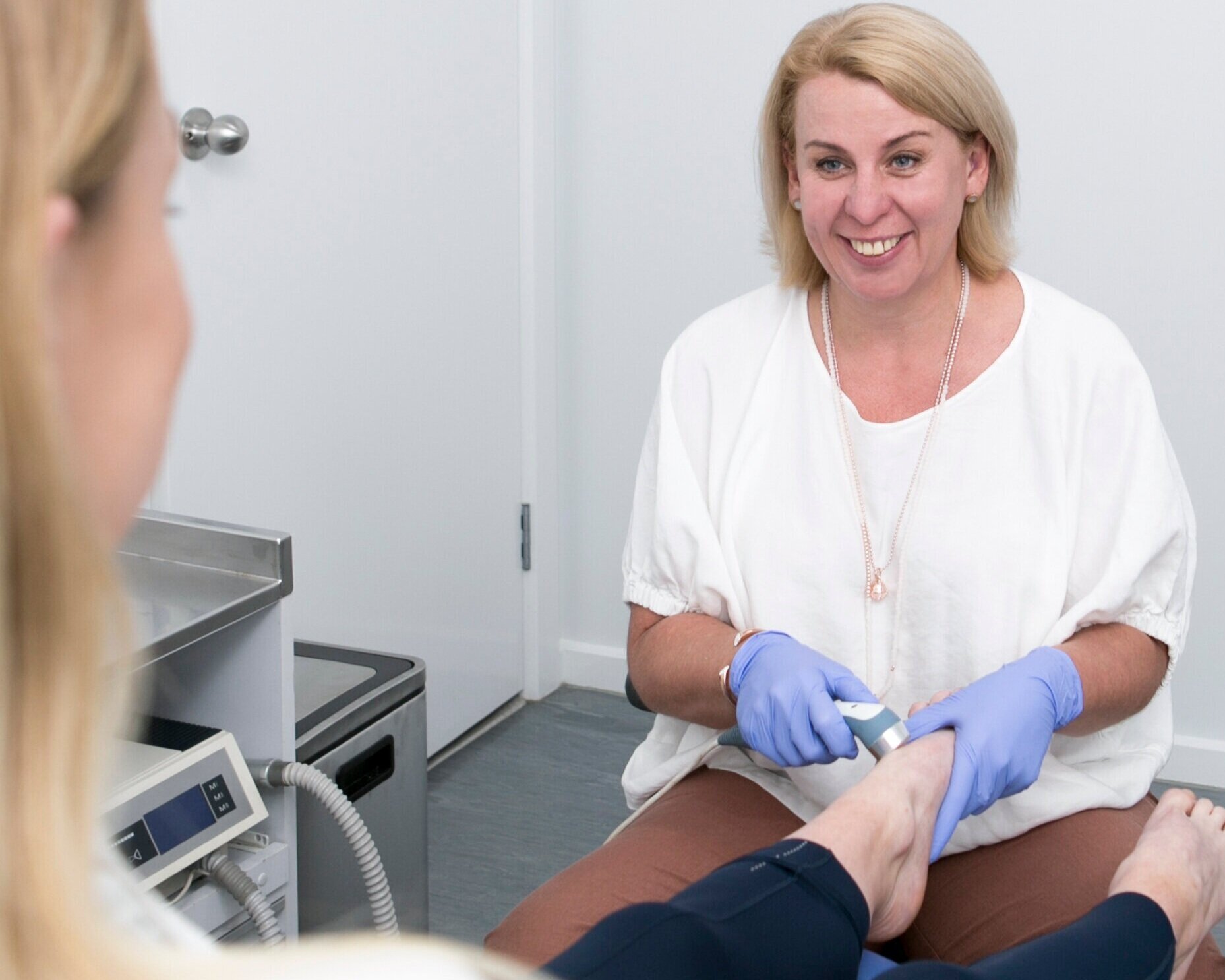HOW PODIATRISTS UNDERSTAND DANCE INJURY
I have a dance injury. How can podiatrists help me?
With so much emphasis placed on the feet and lower limbs, dancers are susceptible to a range of injuries.
The human foot is a marvel of bioengineering, mirroring the complexities of both the inner workings of a watch and the structural strength of a bridge. The foot is comprised of 26 bones which make up 33 different joints and these are held together by more than 100 muscles, ligaments and tendons. Feet also house a vast network of blood vessels and nerves. The foot is defined by 3 sections being the rearfoot, midfoot and forefoot. Together the feet contain 1/4 of all the bones in the body and the components of the feet work together to provide the body with balance, support and mobility.
Getting an injury is one of the last things you want to happen as a dancer. As both dance teachers and podiatrists, Sophie and Kirsti, at The Dance Clinic understand how devastating an injury can be; and know the importance of getting you back to your dancing routine safely, and as soon as possible. The best way we can do this is to get the correct diagnosis as quickly as possible to enable us to implement a treatment plan and get you working towards being back in the studio even stronger than your pre-injury state.
As highly qualified podiatrists, Kirsti Mann and Sophie Young are thoroughly trained in lower limb anatomy and biomechanics. This means that if you have injured yourself or have a niggle that just won’t go away they are well placed to get to the bottom of it and diagnose exactly what is going on.
Podiatrists have the ability to send patients directly for bulk-billed imaging including x-ray and ultrasound of the foot and lower leg. We are also able to refer patients for more specific imaging practices including MRI, CT scans and ultrasound-guided corticosteroid injections.
One of the worst things you can do is to keep dancing through an injury, especially if it has not been diagnosed. There is a high probability that you will make the injury worse and the length of time required for recovery can be greatly extended.
With their dance teacher training, Sophie and Kirsti will be able to tell you what you can and cannot do while you are recovering from your injury and will be able to tailor a program specifically to your needs. Depending on your injury, this may include the use of floor barre, modified exercises or performing some exercises whilst still in a CAM boot to keep your strength and muscle control at a reasonable level for when you return to a full dance class. Often work on correct placement and technique will occur and in some cases, we see dancers returning to class in a stronger position than they were before their injury.
Book an appointment to start getting the support you need.
The Dance Clinic x


